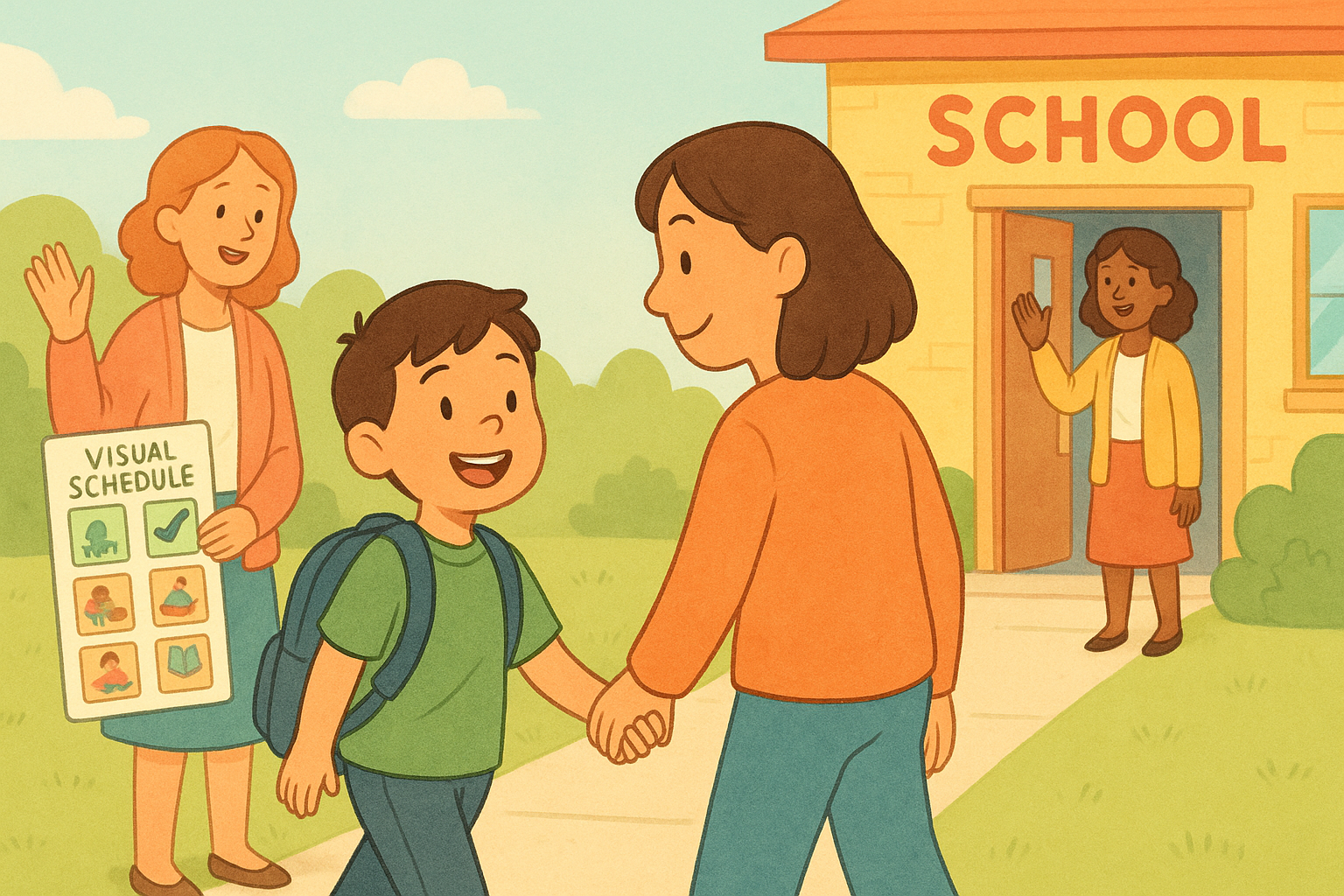ABA Therapy vs. Other Autism Interventions
ABA Therapy vs. Other Autism Interventions: What Parents Should Know
Reading Time: 6 Minutes
If you have recently received an autism diagnosis for your child, you might feel like you’ve been dropped into a bowl of "alphabet soup." Suddenly, doctors and social workers are throwing acronyms at you: ABA, OT, SLP, ESDM, IEP.
It is normal to feel overwhelmed. You want to do everything you can for your child, but you’re likely asking yourself: "Where do we even start? Can we do all of these at once? Which one is actually going to help?"
At Coachella Valley Lighthouse, we believe that informed parents are the best advocates. While every child’s journey is unique, Applied Behavior Analysis (ABA) is widely recognized as the foundational, evidence-based treatment for autism. However, it doesn't work in a vacuum.
In this guide, we will compare ABA therapy to other common interventions—Occupational Therapy, Speech Therapy, and Floortime—to help you build the right support team for your family.
What is ABA Therapy? (The Foundation)
Before we compare, let's define the baseline. Applied Behavior Analysis (ABA) is a therapy based on the science of learning and behavior.
There is a common misconception that ABA is just about "compliance" or stopping bad behaviors. In reality, modern ABA is about teaching the skills necessary for independence. This includes:
- Communication: Asking for what they want.
- Social Skills: Playing with peers and understanding social cues.
- Adaptive Living: Potty training, dressing, and safety skills.
- Reading and Academics: Breaking down complex learning tasks into small, manageable steps.
The Key Differentiator: Data. Unlike many other therapies, ABA is intensely data-driven. At CV Lighthouse, we track progress essentially every session. We don't just guess if a strategy is working; we look at the numbers and adjust immediately if we aren't seeing results.
(Learn more about our specific ABA Services here.)
ABA Therapy vs. Occupational Therapy (OT)
Parents often ask, "If my child has trouble eating or dressing, do I need OT or ABA?" The answer is often both, but they tackle the problem from different angles.
The Distinction
- Occupational Therapy (OT) focuses on the mechanics of the body and sensory system. They work on fine motor skills (grasping a pencil), gross motor skills (balance), and sensory processing (tolerating loud noises or sticky textures).
- ABA Therapy focuses on the motivation and behaviors surrounding those tasks.
Real-World Example: Eating with a Spoon
- The OT Approach: The Occupational Therapist will help your child strengthen their grip, improve their hand-eye coordination to scoop the food, and perhaps suggest a weighted spoon if the child has tremors or sensory needs.
- The ABA Approach: The ABA therapist teaches the child to sit at the table, reinforces the behavior of picking up the spoon rather than using hands, and works on reducing behaviors like throwing the spoon when the child becomes frustrated.
The Verdict: They are partners. OT handles the "body mechanics," while ABA handles the learning process and motivation.
ABA Therapy vs. Speech Therapy (SLP)
Communication delays are often the first sign of autism, so Speech Therapy is usually top of mind for parents.
The Distinction
- Speech Therapy (SLP) focuses on the structure of language. This includes articulation (how to pronounce "spaghetti"), grammar, oral motor strength for swallowing, and the mechanics of voice.
- ABA Therapy focuses on functional communication. This means teaching a child why we communicate—to get our needs met.
Real-World Example: Asking for a Toy
- The Speech Approach: The SLP might work with your child on the "b" sound to ensure they can physically say the word "Ball" clearly.
- The ABA Approach: The ABA therapist captures the child's motivation (they really want the ball!) and uses that moment to teach them that saying "Ball" results in getting the toy.
The Verdict: These therapies are highly complementary. Speech therapy sets the goals for how to speak; ABA provides the intensive, repetitive practice needed to make those words stick in real-life situations.
ABA Therapy vs. Floortime (DIR) / Play Therapy
This is where parents often feel the most conflict. You want your child to be happy and played with, not just "worked on."
The Distinction
- DIR/Floortime is a child-led approach that focuses heavily on emotional development and following the child's lead entirely to build connection.
- ABA is structured and systematic. We identify specific missing skills (like pointing or making eye contact) and create lesson plans to teach them.
The "Rigid" Myth
A decade ago, ABA was often criticized for being too rigid or "table-top" focused. However, Compassionate, Modern ABA (the kind we practice at CV Lighthouse) utilizes Natural Environment Training (NET). We play! We utilize your child's interests—whether that's trains, bubbles, or dinosaurs—to teach skills right there on the floor.
Why ABA Often Wins for Insurance
Insurance providers, including Medi-Cal and private insurers in California, typically require evidence of measurable progress. Because ABA collects data on specific goals (e.g., "Child will request items 8 out of 10 times"), it is often easier to secure insurance coverage for intensive ABA hours compared to the more abstract emotional goals of Floortime.
The "Gold Standard" Factor: Why Start with ABA?
You will often hear ABA referred to as the "Gold Standard" of autism treatment. This isn't just a marketing term; it refers to the depth of scientific backing.
- Evidence Base: The US Surgeon General and the American Psychological Association both recognize ABA as an evidence-based best practice.
- School Readiness: ABA excels at preparing children for the classroom environment. We teach "learning to learn" skills—following group instructions, transitioning from recess to class, and waiting for a turn—that are crucial for school success.
- California Law: Under SB 946, ABA is a mandated benefit for autism in California. This makes it the most accessible form of intensive therapy for families in the Coachella Valley.
It’s Not "Either/Or" — It’s "Yes, And"
At Coachella Valley Lighthouse, we don't believe you have to choose just one therapy forever. We believe in a multidisciplinary approach.
Ideally, your child’s support team works together. A great Board Certified Behavior Analyst (BCBA) will read notes from your Speech Therapist and OT to ensure we are reinforcing their goals during our sessions.
Our Advice: Start with ABA to build the foundation of learning, attention, and behavioral regulation. Once those instructional control skills are in place, layering in Speech and OT becomes much more effective because the child is ready to learn.
Summary & Next Steps
There is no "wrong" therapy when you are acting out of love for your child. However, ABA offers the most comprehensive, data-backed roadmap for helping your child acquire new skills and navigate the world independently.
Whether you live in Indio, Palm Springs, Cathedral City, or anywhere in Riverside County, CV Lighthouse is here to guide you.
Not sure where to start? We can help you navigate the insurance maze and determine if ABA is the right first step for your family.
Contact Coachella Valley Lighthouse today for a free consultation.
Frequently Asked Questions
Can my child do ABA and Speech therapy at the same time?
Yes! In fact, they support each other. If your child is receiving ABA, we can practice the targets set by your speech therapist every day. We just need to coordinate schedules to ensure your child isn't too tired.
How many hours of ABA therapy does a child need?
It varies by child, but research on Early Intensive Behavioral Intervention (EIBI) suggests that 10 to 40 hours per week yields the best long-term outcomes. In contrast, OT and Speech are typically only 30–60 minutes once or twice a week. This is why ABA acts as the "glue" that holds the treatment plan together.
Is ABA therapy covered by insurance in California?
Yes. Most commercial health plans and Medi-Cal are required to cover medically necessary ABA therapy for autism. Our team at CV Lighthouse can help verify your benefits.











